Breathing is the quiet backdrop to everything you do. Change it, and a surprising number of things begin to shift. Energy steadies. Sleep feels deeper. Workouts feel more efficient. Even mood and focus can settle. Myotape offers a simple, practical prompt to retrain the habit of nasal breathing, day and night, without sealing the mouth shut. The tape surrounds the lips and encourages them to rest together, guiding the body back to a pattern many of us lost to habit, stress, congestion, or screen time posture.
This is not a fad gadget. It is a gentle cue for a fundamental skill.
What Myotape Is, and How It Works
Myotape is a soft, elastic adhesive that sits around the mouth rather than across it. The central area is open, so air can pass through the lips if you choose to part them. Its stretch encourages lip closure, which supports nasal breathing at rest and during light activity.
You can use it:
- During the day while working, reading, or walking
- During sleep, to reduce mouth breathing and related dryness
- During easy training sessions to reinforce nasal breathing
Many find that it becomes a comfortable reminder after just a few days. The aim is not to force anything. The aim is to restore a normal resting pattern.
A few people should check with a clinician before using any mouth cueing tape. This includes those with:
- Untreated obstructive sleep apnoea
- Severe nasal blockage, polyps, or frequent nosebleeds
- Severe anxiety or panic related to breathing
- Skin conditions that react badly to adhesives
Children can benefit from nasal breathing cues, though taping should be supervised and chosen with care. If in doubt, speak to a clinician trained in airway and myofunctional care.
Why Nasal Breathing Matters
Mouth breathing is common in modern life. It tends to be faster and more chest-driven. Nasal breathing is quieter, slower, and usually more diaphragmatic. The nose warms, filters, and humidifies air. It also contributes small amounts of nitric oxide, which supports ventilation-perfusion matching and may help with airway tone.
Benefits often reported with consistent nasal breathing include:
- Less snoring, fewer dry-mouth awakenings
- Calmer resting heart rate and steadier energy
- Relief from mouth dryness and dental sensitivity
- Fewer urge-to-sigh patterns during the day
- A greater sense of control under stress
That last point matters. When breathing is soft and nasal, the nervous system often follows.
The Physiology in Brief
Breathing is regulated by chemoreceptors sensitive to carbon dioxide and pH. Many people develop a low tolerance for carbon dioxide, which can lead to over-breathing at rest. This can produce light-headedness, brain fog, and a tendency to breathe through the mouth.
Training nasal breathing encourages:
- Reduced respiratory rate at rest
- More diaphragmatic movement and better rib mobility
- Gentler breathing volume for a given workload
- Improved tolerance to carbon dioxide during daily life and exercise
A simple field test often used in breathing re-education is the BOLT score, which is a comfortable breath-hold time after a normal exhale. Higher scores generally correlate with calmer breathing patterns and better nasal comfort. Myotape helps you build the habit that supports a better score.
How to Start Safely
Take a patient approach. Give yourself a short period each day to practise, then let the habit spread into more of your life.
- Prepare your skin by washing and drying the area around the lips. Avoid heavy creams just before taping.
- Patch test on the forearm for 20 minutes if you have sensitive skin.
- Apply the tape around the mouth, allowing the lips to meet naturally.
- Keep the central opening free so you can part your lips if needed.
- Remove slowly, supporting the skin with your fingers.
If at any point you feel short of breath, anxious, or blocked, remove the tape and return to calm nasal breathing without it. You are training comfort, not forcing compliance.
A Four-Week Breathing Re-Education Plan
This plan moves from short daytime practice to comfortable night-time use. Adjust volume up or down according to how you feel. Steady progress beats heroics.
Week 1: Awareness and gentle cues
- Daytime: 2 to 3 sessions of 10 minutes with Myotape during quiet tasks.
- Drills: Soft nasal breathing with a light emphasis on the exhale. Keep breaths small and silent.
- BOLT check: Test once each morning. Record the number.
Week 2: Extend the habit
- Daytime: 2 sessions of 20 to 30 minutes. Add a short walk while breathing through the nose only.
- Evening: Try 15 to 30 minutes of tape during reading. If restful, keep it on for a short nap.
- Drills: Nose unblocking exercise with gentle breath holds if congestion is present. Keep holds modest and comfortable.
Week 3: Night-time trial
- Bedtime: Apply tape and set a backup plan. If you wake feeling uneasy, remove it and return to nasal soft breathing.
- Daytime movement: 1 to 2 easy walks, 20 to 30 minutes, nasal only. Mouth closed, light effort.
- Drills: Resonant pace breathing once per day at about 5 to 6 breaths per minute. Inhale through the nose for 5 to 6 seconds, exhale for 5 to 6 seconds. Stay relaxed, no breath hunger.
Week 4: Consolidate
- Night-time: Full night if weeks 2 to 3 felt comfortable.
- Exercise: One easy run or cycle at a pace you can maintain with nasal breathing. If the mouth wants to open, slow down a little.
- Drills: Posture and tongue posture training for 5 minutes per day.
Stop any drill that feels wrong. Resume where you last felt steady.
Good Form: The Small Details That Matter
- Posture: Sit tall on your sit bones, ribs stacked over pelvis. Let the belly move softly with each breath.
- Tongue: Rest it on the roof of the mouth with the tip just behind the teeth. This supports the nasal airway.
- Pace: Keep breaths silent and invisible. If someone across the room can hear it, it is probably too much.
- Exhale: Let it be gentle, not forced. Pushing air out can create unnecessary tension.
Using Myotape During Sleep
Night-time mouth breathing can lead to dry mouth, sore throat, and a restless nervous system. Myotape can reduce these issues by supporting lip closure.
Tips for a smooth night:
- Clear the nose before bed with a warm shower or saline rinse.
- Keep the room at a comfortable temperature and slightly humid if dry air is a problem.
- Place the tape shortly before lights out to reduce awareness.
- If you wake and feel odd, remove the tape, sip water, sit upright, and let breathing settle before going back to sleep.
If you snore loudly, gasp, or feel excessively sleepy during the day, seek a sleep assessment. Myotape does not diagnose or treat apnoea.
Training With Nasal Breathing
Athletes across many sports use nasal-only sessions to build efficiency. The aim is to maintain a workload where the mouth can stay closed without stress. Over time, pace increases at the same nasal effort. Myotape can help reinforce the pattern during warm-ups, easy sessions, or technique work.
Guidelines:
- Warm up with 10 to 15 minutes of nasal breathing. Keep it easy.
- Do technique drills, mobility, or low-intensity intervals while staying nasal.
- During higher intensity work, remove the tape. Allow the mouth to assist if needed.
- Cool down nasal-only for 5 to 10 minutes to settle the system.
A simple rule: nasal breathing for base work, mixed breathing for hard efforts, back to nasal for recovery.
Myths and Honest Answers
Is it safe to put tape around the mouth?
- Myotape is designed to sit around the lips and keep an opening in the centre. You can part the lips at any time. Those with airway or skin conditions should get tailored advice.
Will this fix my snoring?
- It often reduces mouth-based snoring by keeping the lips together and supporting nasal airflow. If snoring remains or is severe, seek an assessment. There may be structural or neurological factors to address.
What if my nose is blocked?
- Start with gentle saline rinses, steam, and the nose unblocking exercise. If congestion persists, check for allergies or structural issues.
Is this compatible with CPAP?
- Some people use it alongside nasal masks to reduce mouth leak. Always check with your clinician first.
Will I feel panicky?
- Most adapt in a few days. If anxiety is strong, use daytime drills first with short sessions, then progress. Comfort is the guide.
Troubleshooting
Irritated skin
- Rotate position slightly, use barrier cream well before application, and change tapes daily. Give the skin a rest if redness appears.
Drooling
- Common for the first nights. It usually fades as tone improves. A small towel on the pillow helps in the meantime.
Nasal dryness
- Increase room humidity, hydrate well, and use saline gel or spray. Mouth dryness usually improves once the habit sets in.
Heavy-headed on waking
- Reduce the tape area or time, or focus on daytime practice for another week. Check sleep timing and caffeine late in the day.
Cannot stay nasal during walks
- Slow the pace until you can. This is conditioning, not willpower. Speed comes back as tolerance improves.
Simple Drills That Pair Well With Myotape
- Nose unblocking: After a normal exhale, hold the nose gently and nod the head a few times until you feel a medium urge to breathe. Release and breathe quietly through the nose for 30 seconds. Repeat 3 to 5 times with plenty of rest.
- Light-breathing sets: 5 minutes where you make your breath almost silent and invisible, staying relaxed.
- Pursed-lip finish: If breathlessness rises, exhale gently through pursed lips for a few breaths to settle.
Keep any breath holds comfortable. The aim is a calm signal to the brain, not a test of grit.
Lifestyle Support That Makes Nasal Breathing Easier
- Allergy care: Wash bedding hot weekly, encase pillows, keep pets out of the bedroom if allergies are a trigger.
- Humidity: Target 40 to 50 percent indoors. Too dry can irritate the nose, too moist can worsen dust mites and mould.
- Oral health: Regular dental checks, tongue and lip tone exercises, and nasal breathing reduce dry-mouth risk.
- Food and timing: Spicy late dinners can trigger congestion for some. Finish meals a few hours before bed.
- Screens: Bring devices to eye level, keep the jaw soft, and breathe through the nose while reading or working.
Measuring Progress Without Guesswork
Tracking a few metrics keeps you honest and motivated. Small, consistent changes add up.
- BOLT score on waking
- Snoring minutes per night from a snore app or partner feedback
- Morning mouth dryness, 0 to 10 scale
- Resting heart rate and HRV trend
- Daytime nasal comfort, 0 to 10 scale
- Exercise pace or power at a nasal-only effort
A simple tracker helps:
| Metric | Baseline | Week 2 | Week 4 | Target trend |
|---|---|---|---|---|
| BOLT score seconds | Gradual rise toward 25 to 35 | |||
| Snoring minutes per night | Downward trend | |||
| Morning mouth dryness 0 to 10 | Toward 0 to 2 | |||
| Resting heart rate bpm | Small decrease or stable | |||
| HRV trend | Stable or improving | |||
| Nasal comfort 0 to 10 | Toward 7 to 10 | |||
| Easy run pace at nasal-only | Faster at same effort |
Do not obsess over any single day. Look for trends over weeks.
How This Helps Oral and Facial Development
Mouth posture shapes the face over time, especially in children. Lips together, tongue on the palate, nasal breathing, and proper swallowing all support balanced growth and dental arch stability. While Myotape is not an orthodontic device, it can support these behaviours by reminding the lips to meet.
Adults can benefit too. Better lip seal and tongue posture reduce mouth dryness, gum irritation, and can support stability for orthodontic retention.
If there are ties or restrictions in the tongue or lips, or if open-mouth rest posture is stubborn, a myofunctional therapist can tailor exercises to your needs.
What To Do If Nasal Blockage Persists
Some obstructions need medical care. Clues include constant one-sided blockage, frequent nosebleeds, pain, or repeated infections. Hay fever and non-allergic rhinitis are common and often respond to a mix of medication, rinses, and environment changes.
A skilled clinician can assess the nasal septum, turbinates, and the back of the nose. Addressing structure and inflammation can make Myotape far more comfortable to use, particularly at night.
A Day That Works
Many people succeed when they place short cues where they fit naturally.
- On waking: 3 minutes of light-breathing drill, BOLT check
- Mid-morning: 10 minutes of taped quiet work
- Lunch walk: 15 minutes nasal-only stroll
- Late afternoon: 5 minutes resonance breathing
- Evening: 20 minutes of tape while reading, then remove or keep for sleep based on comfort
These touchpoints build skill without disrupting your schedule.
For Coaches, Clinicians, and Parents
- Coaches: Use nasal-only warm-ups and cool-downs, plus one base session per week. Watch for relaxed shoulders and quiet breathing.
- Clinicians: Pair Myotape with myofunctional therapy and sleep hygiene. Screen for apnoea and nasal obstruction early.
- Parents: Make it playful. Short reading time with tape, gentle nose clearing, and chewy foods suited to the child’s age.
A team approach speeds progress.
What Progress Feels Like
The change is often subtle then obvious. You notice a quieter breath at rest. The mouth stays closed without effort. Morning dryness fades. A hill walk feels smoother. You catch yourself breathing through the nose during a tricky email. Small signals add up to a clear shift in how you feel through the day.
Keep going gently. The habit becomes you.











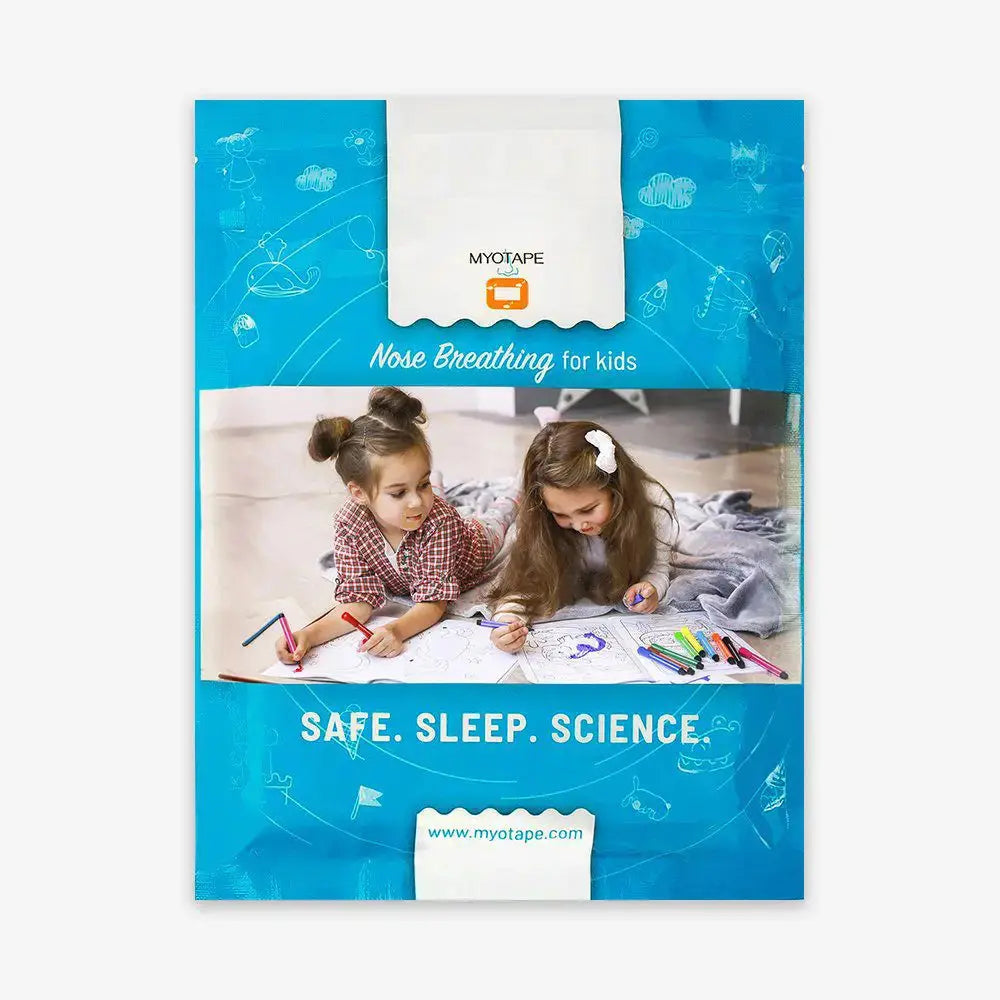
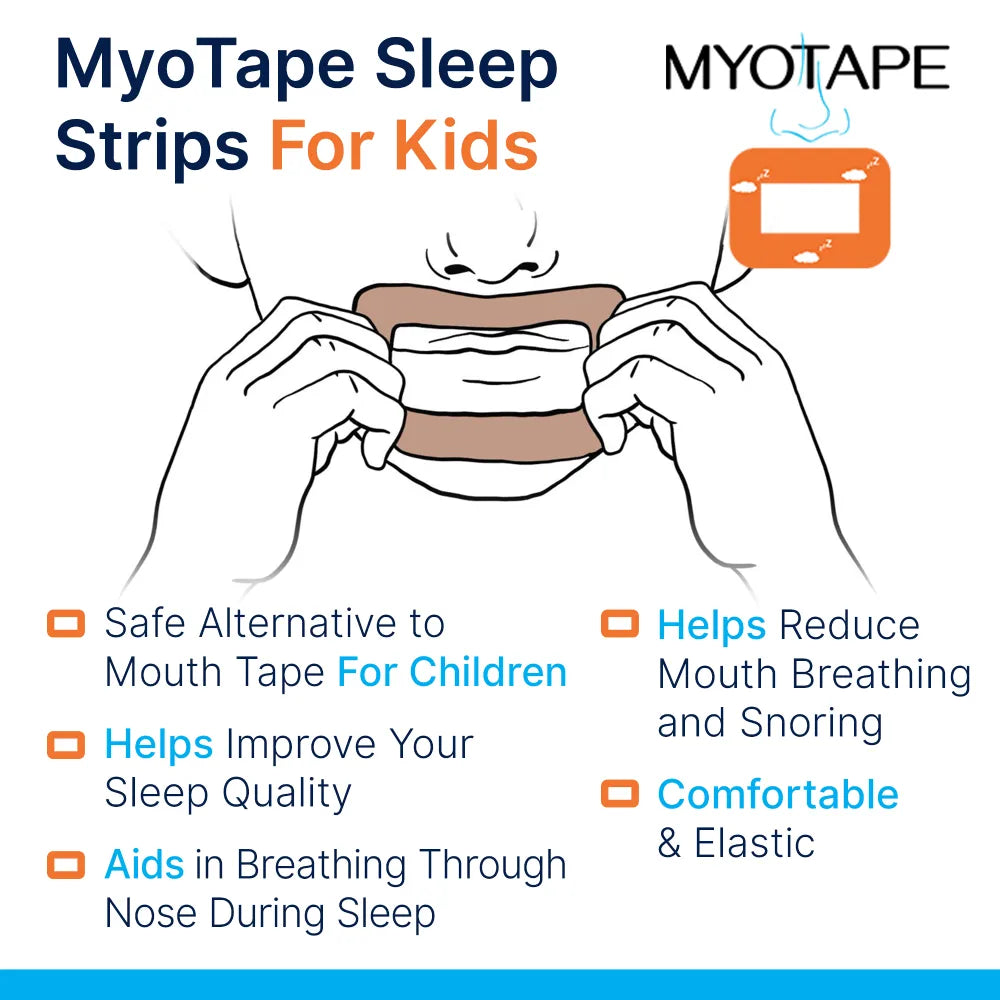
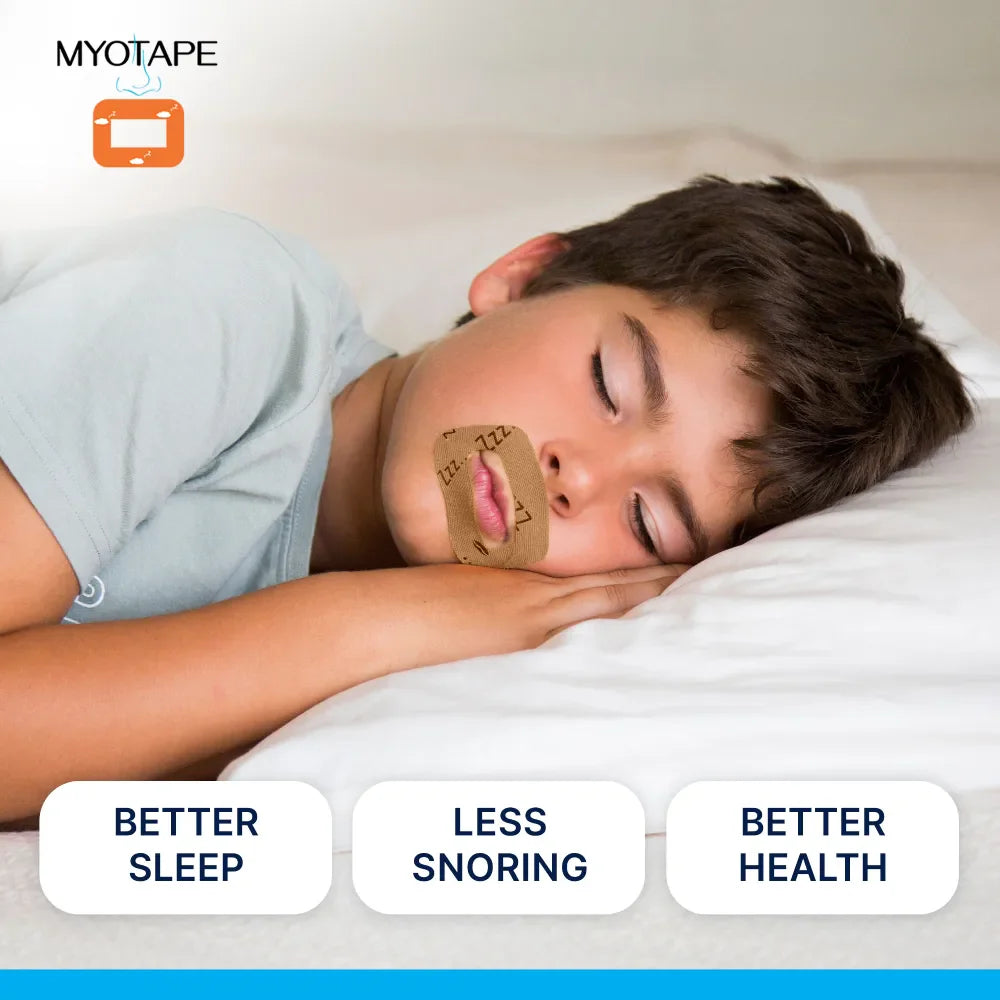
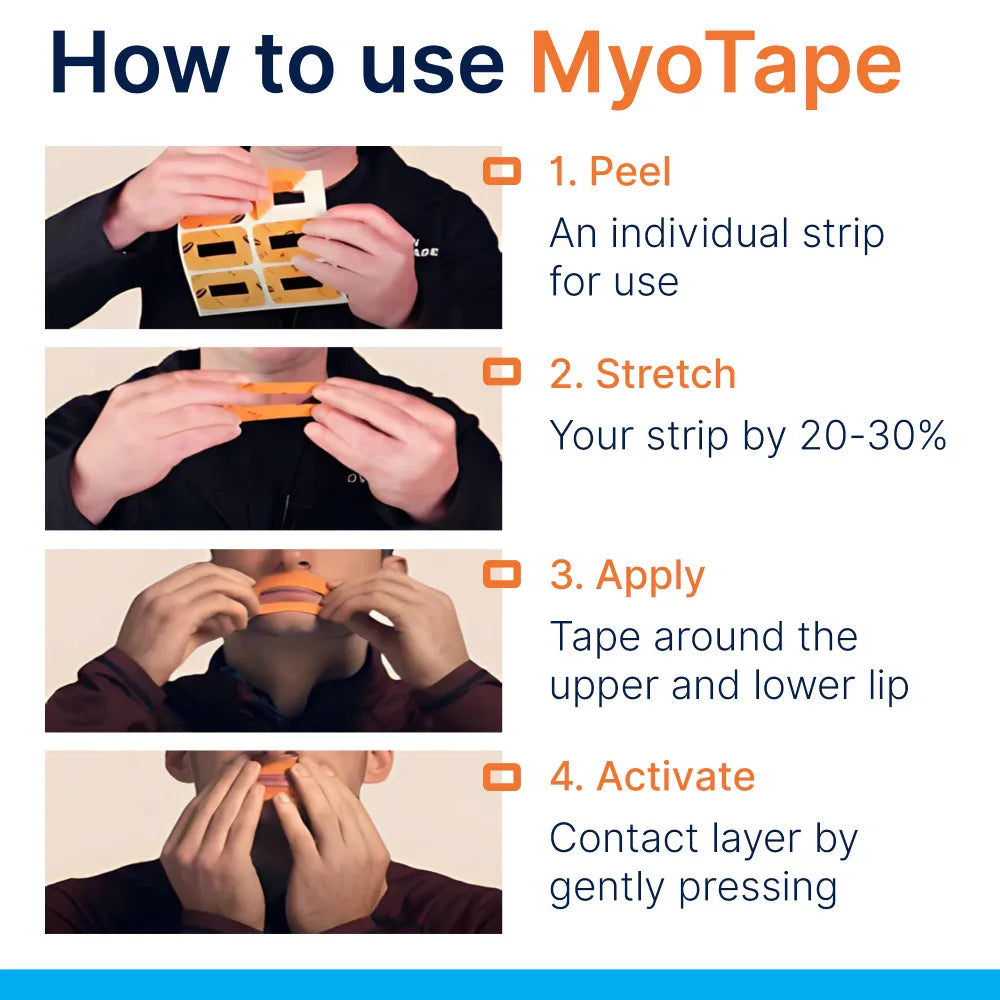
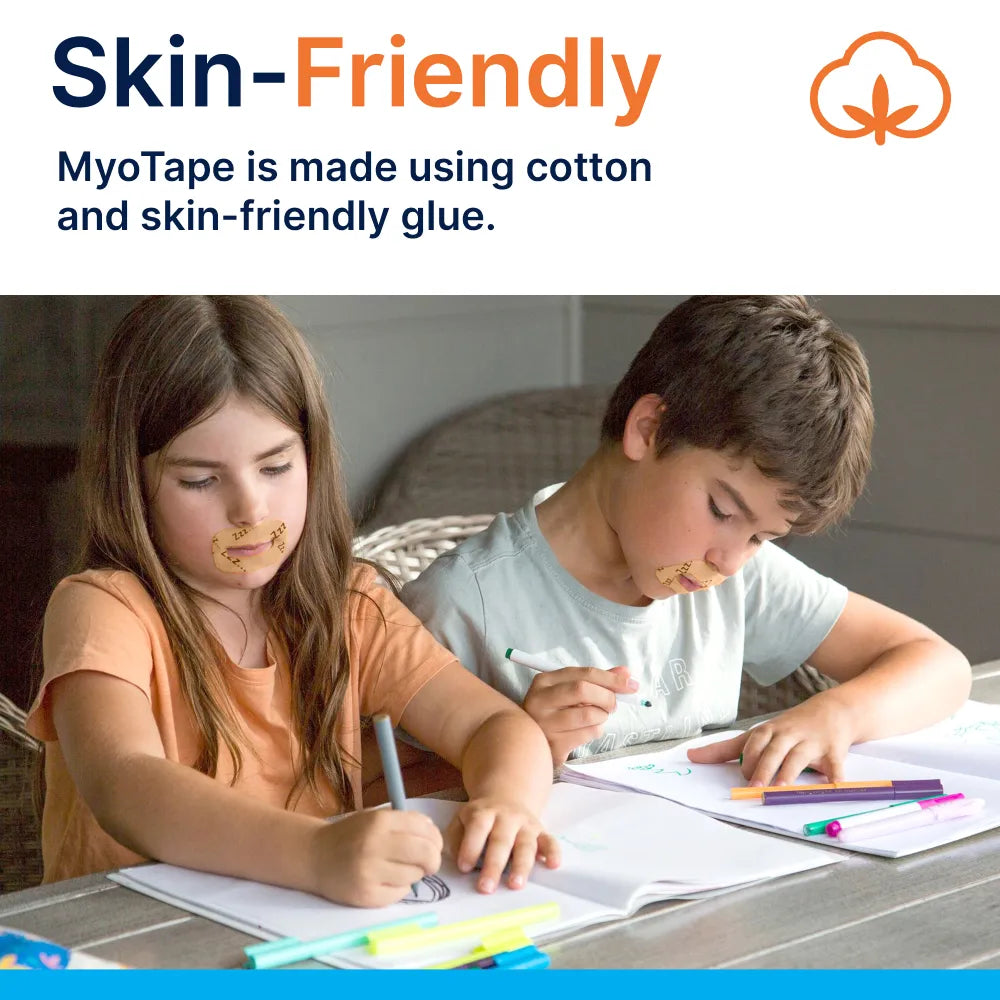










0 comments